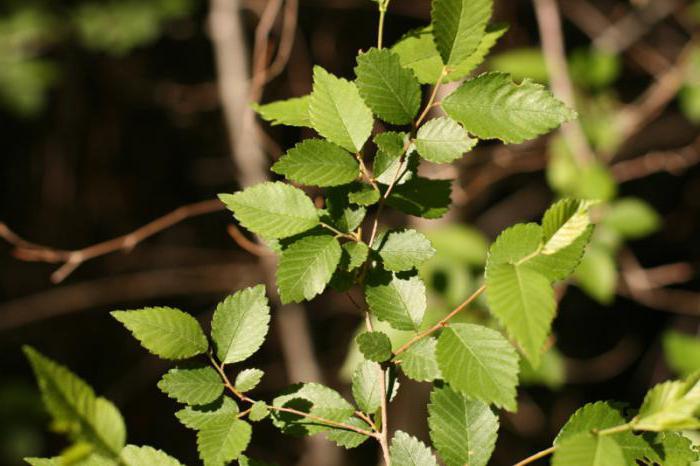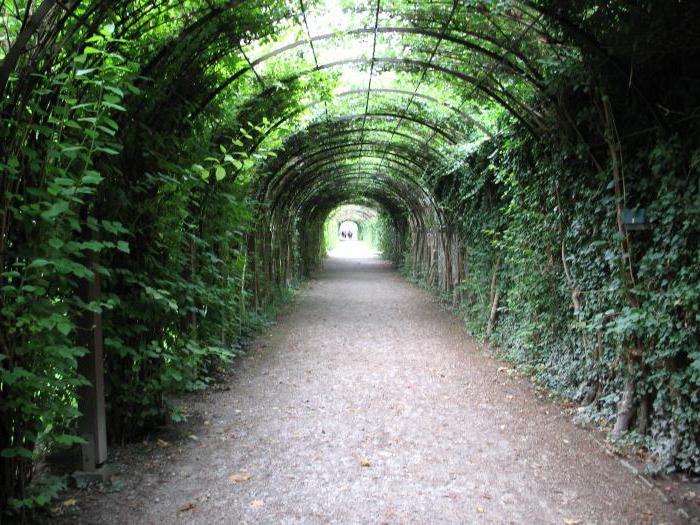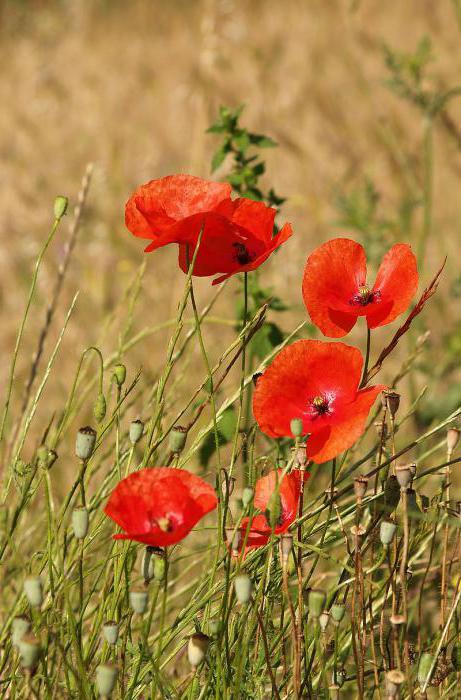Elm squat in economic and gardenplantings are most common compared to other types of trees of the same genus. Possessing absolute unpretentiousness, he simultaneously became a valuable breed in protective afforestation and a weed, along with the American maple, which drowns out more valuable plantings.
About the title

In the people very often you can meet the word"Karagach", which is understood not only squat elm. The name is rather a collective character and in translation from Turkic it means “bark” and “black”. Under it often means several types of elm, including small-leaved.
Growing area
Natural area of growth squatelm trees are mainly China, and more specifically, the north-west and north-east of the country. In addition, the tree can be found in Western Siberia, Mongolia, India, Korea, Tibet. Cultivated in North and South America as a forest restorer and in landscape gardening. The tree is undemanding to the conditions of growth, but prefers fertile soil. It is found in deciduous and mixed forests.
Elm squat: description
The tree is tall and reaches tonature under favorable conditions of 25 m with a trunk diameter of about 1 m. In the arid climate, the natural habitat grows into the form of a shrub. Despite the popular name karagach, the bark of the tree is not black, but has a gray-brown or rich gray tint, smooth, cracking is possible. Young shoots differ in color from adults. They have a light gray tint with yellowness, the surface is rough or smooth, with scattered lentils.

Elm squat has characteristic oval orlancet-elliptical shape leaves, reaching a length of 2 to 8 cm and a width of 1.2-3.5 cm. The base of the plate is symmetrical with a pointed apex and jagged edges. The leaf color changes during the seasons, in spring it is light green, in summer it is more saturated, in autumn the tree gets an olive-yellow shade (pictured below is an elm alley in September-October). The fruit is an almost rounded lion that grows up to 1-1.5 cm in diameter, with a nutlet located in the middle.
Growth conditions
Elm squat, whose photo you see inthe article does not have a high life expectancy - only 40-60 years. However, during this time it reaches an impressive size. The growth rate of the tree is high and not inferior to the white acacia or the ash-leaved maple. In a culture, elm is unpretentious and it imposes minimal requirements on soil fertility, as well as on its moisture content. It tolerates even salinization, is highly resistant to drought, it is winter-hardy (can withstand up to -36 ° C). The only thing that needs to be taken into account is that the tree is light-requiring, half-shade tolerates, but develops worse.

In the culture of elm squat introduced from 1860.Used in landscaping parks and gardens. Especially appreciated in the arid regions of the country. Forms a powerful root system of the surface type. It tolerates polluted urban air, cutting and trimming. The latter features are used to create hedges. It is propagated only by seeds, does not form root offspring and, therefore, overgrowth, which is an undoubted advantage. It has a decorative weeping shape with falling branches. The most beautiful tree in the fruiting period.
Elm squat: how to use it in the garden?
Elm is a very beautiful tree with longshoots and large toothed leaves, especially effectively it looks in the fall, when completely covered with fruits. In ornamental gardening, the plant has been used for a long time. Choosing it for planting on your site, you should remember that the tree is light-requiring and only its sun fully reveals its beauty.
The krone lends itself well to pruning and shaping.However, this should not be rushed. In the first years of cultivation, only damaged and dry branches should be removed. Formative pruning is possible from about 4 years of growth, while not forgetting the use of garden warrior. In general, the tree is resistant to diseases and pests.

Elm squat, which reaches a height of 25 mvery good in group, monoplants and mixed, as alleys in parks and as a tapeworm. The single-seated specimens surrounded by the even green of the lawn are very effective, especially if you use a hybrid with a weeping crown shape. Only when the tree does not interfere, can it open up in full beauty. His crown in such conditions will be the correct form, and the trunk - straight and strong. Solitser landing is used as an accent on the site, as they always attract the eye. However, it should be remembered about the proportionality of plants and area. A large plot is a large tree and vice versa, otherwise any charm will be lost.
Use of elm for berso
One of the unusual uses of elm- the creation of the most beautiful berso. Indoor galleries are made from pillars mounted along pillars along garden paths or avenues. Trees are planted on the sides, the branches of which are gently bent down and fastened to the frame. Gradually expanding, they form a single continuous green tunnel, as in the photo. Given the high speed of the elm decorative effect can be achieved quite quickly.

By design and mind, Berso is often compared topergola. However, the latter can be safely called the younger sister of the first. Although Bersault is very similar, it is still larger and more massive, longer, and the green cover is more dense. Pergola is rather exclusively decorative and easy in perception, suitable for small areas and courtyards. Bersault - the prerogative of large gardens and parks, at the beginning and end of this stunning tunnel gazebos are often installed.
Reforestation
It has already been mentioned above that the elm is squatIt is actively used for forest restoration in areas that have been subjected to fire or logging. The main method is still considered manual planting of seedlings using Kolesov’s sword. An interesting device is, in fact, a narrow shovel of steel. It was invented by the director of the agricultural school of Kharkov, A. Kolesov in 1883 for planting on the sandstones of pine.

The use of such elm measures is due toseveral factors. First, the tree is characterized by a high growth rate, and in the first years young saplings give a gain of up to one meter in the presence of favorable conditions. Secondly, the species quickly forms thickets, multiplying by self-sowing. Thirdly, the tree is undemanding to soils, drought-resistant, patiently to strong frosts and salinization. Thus, elm is able to grow almost everywhere.












